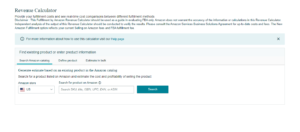
by Rolando Corley | Jun 29, 2024 | Others
Ace Nod is a well-established online betting platform known for its user-friendly interface and extensive betting markets. However, for any online betting site, one of the most critical aspects that users pay attention to is the payment system. Ensuring that deposits and withdrawals are processed quickly, securely, and without excessive fees is crucial for maintaining a positive betting experience. In this guide, we’ll take a closer look at the payment methods available on Ace Nod سایت آس نود, including how to deposit and withdraw funds, transaction limits, fees, and user experiences.
Overview of Accepted Payment Methods on Ace Nod
Ace Nod offers a range of payment methods, ensuring that users from different regions and with varying preferences can find a suitable option. The platform supports both traditional and modern methods, allowing for flexibility in managing your funds.
Here’s a breakdown of the most commonly accepted payment methods on Ace Nod:
- Credit and Debit Cards: Visa, Mastercard, and Maestro are widely accepted. This method is popular due to its familiarity and ease of use.
- E-Wallets: Options like PayPal, Skrill, and Neteller are available for users who prefer faster, more digital-focused transactions.
- Bank Transfers: Direct bank transfers are available for those who prefer to move larger sums of money or avoid third-party services.
- Cryptocurrency: For users looking for more anonymity and security, Ace Nod also supports popular cryptocurrencies like Bitcoin and Ethereum.
- Prepaid Cards: Services such as Paysafecard allow users to deposit funds without the need for a bank account or credit card.
Ace Nod aims to accommodate a global audience, which is why the diversity of payment methods is a key strength of the platform. Whether you’re a fan of traditional banking or prefer modern digital wallets, Ace Nod has you covered.
How to Deposit Funds Securely
Depositing funds on Ace Nod is a simple process, but it’s essential to ensure that your transaction is secure. The platform has implemented several security measures to protect users’ financial information, such as encryption technology and secure payment gateways. Here’s a step-by-step guide to depositing funds securely on Ace Nod:
- Login to Your Account: First, you’ll need to log in to your Ace Nod account using your username and password.
- Navigate to the Deposit Section: Once logged in, click on the “Deposit” button, typically found in the account dashboard or user menu.
- Select Your Preferred Payment Method: You’ll be presented with a list of accepted payment methods. Choose the one that works best for you.
- Enter the Deposit Amount: After selecting the payment method, input the amount you wish to deposit. Be mindful of the minimum and maximum limits (which we’ll cover later).
- Complete the Payment Process: Depending on the method you choose, you’ll either need to input your card details, log into your e-wallet account, or initiate a bank transfer. Follow the prompts to complete the transaction.
- Confirm and Wait for Funds to Reflect: Most deposits on Ace Nod are processed instantly, meaning the funds should appear in your account within minutes. In rare cases, some methods (such as bank transfers) might take longer.
Withdrawal Process and Timeframes
When it comes to withdrawing your winnings from Ace Nod, the process is equally straightforward but can take a bit longer depending on the method used. To initiate a withdrawal, follow these steps:
- Go to the Withdrawal Section: In your account dashboard, navigate to the “Withdrawal” section.
- Select a Withdrawal Method: Ace Nod usually prefers users to withdraw funds using the same method they deposited with, but in cases where this isn’t possible (for instance, with certain prepaid cards), alternative methods will be provided.
- Enter the Amount to Withdraw: Input the amount you want to withdraw, ensuring that it falls within the platform’s limits.
- Submit the Request: Once your withdrawal request has been submitted, it will go through a review process. For most methods, this takes between 24 to 48 hours. After approval, the funds will be transferred to your account.
- Wait for the Funds: The time it takes for the money to reach you will depend on your chosen method. E-wallets tend to process withdrawals within hours, while bank transfers and credit card withdrawals can take several days (up to 5 business days).
Minimum and Maximum Transaction Limits
Ace Nod has set certain limits on both deposits and withdrawals to ensure that transactions are manageable for both casual players and high rollers.
- Minimum Deposit: The minimum deposit typically starts at around $10, making the platform accessible to most users.
- Maximum Deposit: Maximum deposits can vary depending on the payment method, but generally, the limit is set higher for bank transfers or cryptocurrency transactions (up to $10,000 or more).
- Minimum Withdrawal: The minimum withdrawal amount usually starts at $20, ensuring that even smaller winnings can be cashed out.
- Maximum Withdrawal: Similar to deposits, maximum withdrawal limits depend on the method used, with higher limits available for bank transfers and lower limits for e-wallets or credit/debit card withdrawals.
These limits are designed to give users flexibility while ensuring that transactions remain secure and efficient.
Fees Associated with Deposits and Withdrawals
One of the biggest concerns for users when it comes to online betting platforms is transaction fees. Luckily, Ace Nod does not charge excessive fees for most deposit and withdrawal methods. Here’s a breakdown of the typical fees you might encounter:
- Deposits: Most deposit methods on Ace Nod are free of charge. However, some e-wallets may charge a small processing fee (usually 1-2%) depending on your country or currency.
- Withdrawals: Similarly, Ace Nod does not charge fees for most withdrawal methods, but some external providers like banks or e-wallet services may impose their own transaction fees. Bank transfers, in particular, may come with a fee that ranges from $5 to $30 depending on the amount being withdrawn and the bank involved.
It’s always a good idea to check with your payment provider to understand any fees that might be incurred on their end.
Currency Options Available for Users
Ace Nod supports a wide range of currencies, allowing players from various regions to deposit and withdraw in their preferred currency. Commonly supported currencies include:
- USD (US Dollar)
- EUR (Euro)
- GBP (British Pound)
- AUD (Australian Dollar)
- CAD (Canadian Dollar)
- BTC/ETH (Bitcoin and Ethereum for cryptocurrency users)
The platform’s multi-currency support is particularly helpful for international users, as it allows for smooth and cost-effective transactions without the need for constant currency conversions.
User Experiences with Transaction Speed and Reliability
Based on user feedback, Ace Nod is generally praised for the speed and reliability of its transactions. Deposits are often processed instantly, and withdrawals (especially via e-wallets) are completed within 24 hours. Some users have noted that bank transfers can take a bit longer, but this is a common issue with most online betting sites and not unique to Ace Nod.
Overall, players report a high level of satisfaction with the payment process, noting that Ace Nod’s platform is intuitive and easy to use.
Ensuring Secure and Smooth Transactions
Security is always a priority when dealing with financial transactions, especially in online betting. Ace Nod has implemented various measures to ensure that users’ deposits and withdrawals are handled securely. These measures include:
- SSL Encryption: All transactions are protected by Secure Socket Layer (SSL) encryption, ensuring that your personal and financial information is safe from hackers and third parties.
- Two-Factor Authentication (2FA): Ace Nod encourages users to enable two-factor authentication, adding an extra layer of security to their accounts.
- Identity Verification: Before processing any withdrawal, Ace Nod requires users to verify their identity through KYC (Know Your Customer) processes. This helps prevent fraud and ensures that only legitimate users can access the platform’s financial features.
By following these security protocols and ensuring that you use trusted payment methods, you can enjoy a smooth and secure experience when depositing and withdrawing funds on Ace Nod.
In conclusion, Ace Nod provides a robust and user-friendly payment system that accommodates a wide range of preferences. Whether you prefer traditional methods like credit cards and bank transfers or more modern options like e-wallets and cryptocurrency, Ace Nod ensures secure, efficient, and low-cost transactions. By understanding the deposit and withdrawal processes, transaction limits, and fees, you can enjoy a seamless betting experience on the platform.

by Rolando Corley | Jun 29, 2024 | Others
The world of online betting has seen a meteoric rise in popularity, with various games capturing the attention of players worldwide. One such game that has taken the online gambling community by storm is the “Explosion” game ثبت نام سایت انفجار. This exciting and fast-paced game offers players the thrill of high stakes and quick rewards. However, before diving into the action, understanding the registration process for the Explosion betting site is crucial. This article will guide you through everything you need to know about registering for the Explosion betting site.
What is the Explosion Game?
The Explosion game is a unique betting experience that combines elements of chance and strategy. Players place bets on a multiplier that increases over time. The objective is to cash out before the multiplier “explodes,” meaning if you don’t withdraw your bet in time, you lose your stake. This gameplay creates a thrilling atmosphere, as players must make quick decisions based on their intuition and risk appetite.
Key Features of the Explosion Game
- Real-Time Betting: Players can see the multiplier grow in real-time, adding to the excitement.
- Instant Rewards: If you cash out before the explosion, you receive your initial stake multiplied by the multiplier.
- User-Friendly Interface: Most platforms hosting the Explosion game have intuitive designs that make it easy for both new and experienced players to navigate.
Why Register on an Explosion Betting Site?
Before you can start playing the Explosion game, you must register on a betting site. Here are several reasons why registration is essential:
- Access to Features: Registered users often have access to exclusive features, bonuses, and promotions that unregistered visitors do not.
- Secure Transactions: Registration ensures that your financial information is protected, allowing you to deposit and withdraw funds safely.
- Personalized Experience: Once registered, platforms can tailor your experience based on your preferences and gaming history.
The Registration Process: Step-by-Step
Registering on an Explosion betting site is typically a straightforward process. Here’s a step-by-step guide to help you through it:
Step 1: Choose a Reputable Betting Site
Before you can register, it’s crucial to select a reputable betting site that offers the Explosion game. Look for sites with positive reviews, a solid reputation, and appropriate licensing. Popular options may include:
- Bet One
- One X Bet
- Bet 303
- Ace 90 Bet
- Jet Bet
Step 2: Visit the Registration Page
Once you’ve chosen a betting site, navigate to its homepage. Look for a button or link that says “Register,” “Sign Up,” or “Create Account.” This will take you to the registration page.
Step 3: Fill Out the Registration Form
Most registration forms require the following information:
- Full Name: Your legal name as it appears on identification.
- Email Address: A valid email for account verification and communication.
- Password: Choose a strong password to secure your account.
- Date of Birth: To confirm that you meet the legal age requirement for gambling.
- Phone Number (optional): Some sites may require this for added security.
Step 4: Agree to Terms and Conditions
Before finalizing your registration, you’ll typically need to agree to the site’s terms and conditions. It’s crucial to read these carefully, as they outline your rights and responsibilities as a player.
Step 5: Verify Your Account
After submitting your registration form, you may receive a verification email. Click the link in this email to confirm your account. Some sites may also require additional verification, such as submitting identification documents.
Step 6: Make Your First Deposit
Once your account is verified, you can make your first deposit. Most betting sites offer a variety of payment methods, including credit cards, e-wallets, and bank transfers. Be sure to check for any bonuses associated with your first deposit.
Step 7: Start Playing the Explosion Game
Now that your account is set up and funded, you can navigate to the games section and start playing the Explosion game. Take your time to familiarize yourself with the gameplay mechanics before placing significant bets.
Tips for a Successful Experience on the Explosion Betting Site
- Start Small: If you’re new to the game, begin with smaller bets to understand its mechanics without risking too much.
- Set a Budget: Establish a budget for your gambling activities and stick to it. This will help you manage your finances and reduce the risk of significant losses.
- Learn the Game: Spend time understanding the game’s dynamics, including how the multiplier works and timing your cashouts.
- Take Advantage of Bonuses: Many sites offer promotional bonuses for new players. Utilize these to boost your initial bankroll.
- Practice Responsible Gambling: Always gamble responsibly. If you feel that your gambling is becoming a problem, seek help.
Common Issues During Registration
While registering for an Explosion betting site is usually a smooth process, you may encounter some common issues:
1. Verification Delays
Some sites may take longer than expected to verify your account. Ensure that you provide accurate information and check your email for any requests for additional documentation.
2. Payment Issues
If you face difficulties making a deposit or withdrawal, check if your chosen payment method is accepted. Additionally, ensure that your account is properly verified.
3. Technical Glitches
Sometimes, websites may experience technical issues. If you encounter problems during registration, try refreshing the page or using a different browser. If issues persist, contact customer support.
Conclusion
The registration process for an Explosion betting site is your gateway to an exhilarating gaming experience. By following the steps outlined in this guide, you can quickly and securely create an account, allowing you to dive into the world of online betting and enjoy the thrill of the Explosion game. Remember to choose a reputable site, practice responsible gambling, and most importantly, have fun! As you embark on this exciting journey, may luck be on your side!
by Rolando Corley | Jun 15, 2024 | Physical Health
As a guy in my 20s, I’ve always wanted to get a six-pack and look shredded. But the thought of spending hours at the gym lifting weights and doing crunches just doesn’t appeal to me. I’ve tried it before and quickly lost motivation. That’s why I was so excited when I discovered the Hilipert EMS Muscle Stimulator.
I’ll admit, I was a bit skeptical at first. How could a little device that sends electrical impulses to your muscles really give you abs without any effort? But after reading some positive reviews from people with similar goals, I decided to give it a shot. And I’m so glad I did!
After just a few weeks of using the Hilipert Muscle Stimulator for 30 minutes a day, I started to notice a real difference in my midsection. My abs were becoming more defined and my waistline was slimming down. And the best part? I didn’t have to step foot in the gym once! I could use the device while watching TV, working at my desk, or even taking a nap.
The Hilipert is so easy to use, with different intensity levels and modes to customize your workout. The electrodes stick right to your skin and the device does all the work, contracting your muscles for you. It’s like having a personal trainer in your pocket.
If you’re like me and want to get in shape without the hassle of traditional workouts, I highly recommend giving the Hilipert EMS Muscle Stimulator a try. It’s affordable, convenient, and actually works. In just a few weeks, you’ll be well on your way to that six-pack you’ve always wanted. No gym required!
Let me share the details below.
What is Hilipert Muscle Stimulator?
The Hilipert EMS Muscle Stimulator is an advanced fitness device that utilizes Electrical Muscle Stimulation (EMS) technology to aid in muscle development and fat loss. It sends low-voltage electrical impulses to stimulate muscle contractions, mimicking the signals sent by the brain during exercise.

How Does It Work?
The Hilipert EMS Muscle Stimulator works by sending electrical impulses to the muscles, causing them to contract and relax. These contractions mimic the natural muscle movements during exercise, providing an effective workout.
The Hilipert EMS Muscle Stimulator is designed with 6 different modes and 10 intensity levels, allowing users to customize their workouts to match their fitness goals and comfort levels. This adaptability ensures a personalized and effective training experience for users of all fitness backgrounds.
How to Use Hilipert Muscle Stimulator
Using the Hilipert EMS Muscle Stimulator is straightforward. Here’s a quick guide on how to use it:
- Charge the device using the included USB cable.
- Position the electrodes on the desired muscle groups, ensuring they make proper contact with the skin.
- Turn on the device and select your preferred mode and intensity level using the buttons.
- Sit back and relax as the device stimulates your muscles for the recommended duration, typically 20-30 minutes per session.
- After the session, turn off the device and carefully remove the electrodes. Clean the skin if necessary and store the device as per the instructions.
The Hilipert EMS Muscle Stimulator is designed to be user-friendly, with a clear LED display and simple controls. Its lightweight and portable design make it convenient to use at home, in the office, or even while performing other activities.
The Pros and Cons of Hilipert Muscle Stimulator
Pros:
- Targets multiple muscle groups simultaneously for efficient workouts
- Customizable with 6 modes and 10 intensity levels to suit individual needs
- Convenient and portable design for use at home, office, or on-the-go
- Easy to use with clear LED display and simple controls
- Helps tone muscles and burn fat with regular use
Cons:
- Results may vary depending on individual factors and consistency of use
- Requires proper placement of electrodes for maximum effectiveness
- Not a substitute for a balanced diet and regular exercise
Is Hilipert Muscle Stimulator Legit?
Yes, it’s legit. The Hilipert EMS Muscle Stimulator uses proven Electrical Muscle Stimulation (EMS) technology, which has been used in physical therapy and sports medicine for decades.
Hilipert is a reputable brand that prioritizes quality and customer satisfaction, as evidenced by positive reviews and high ratings from satisfied users.
When used as directed, the device can help tone muscles and burn fat, leading to a more sculpted and toned physique.
Where to Buy Hilipert Muscle Stimulator?
The official Hilipert website is the best place to buy the Hilipert EMS Muscle Stimulator. By buying directly from the manufacturer, you can ensure you’re getting an authentic product and take advantage of any ongoing promotions or discounts.

by Rolando Corley | Jun 8, 2024 | Business
Young entrepreneurs are ushering in a new era in the Saudi investment sector, largely due to the policy reforms of the Vision 2030 plan. This bold initiative has shifted the economy from oil dependence to a diversified, innovative, and technologically advanced landscape. Startups in finance, e-commerce, and renewable energy are thriving as entry barriers fall. These young business leaders are attracting foreign investors and fostering an entrepreneurial culture through improved access to finance, mentorship, and a global network. The synergy of governmental changes and entrepreneurial enthusiasm promises a prosperous, sustainable future for Saudi Arabia’s economy.
Saad Anwar stands out among foreign investors in Saudi Arabia. Born on March 19, 1998, in Lucknow, India, Saad has become one of the country’s youngest foreign investors. From humble beginnings, the co-founder and CEO of Senyar Arabian Trading Company and European Segment Company symbolizes perseverance and efficiency. Featured in Business Outreach Magazine’s “Business Leaders of the Year 2023,” Saad Anwar’s story is both inspiring and educational.
Senyar Arabian Trading Company was established in March 2018 by Saad Anwar, Shahzad Latif, and Husnain Akbar. Saad’s business journey began in 2016 when he started working after finishing high school to support his family. His first job as a customer relations executive soon felt unsatisfactory, but his determination remained strong. Despite the challenges of starting Senyar, Saad took on front-end management, financial control, planning, and growth tasks. Shahzad and Husnain, handling the back-end, contributed to the company’s rapid growth.
As Saudi Arabian policy evolved, Saad Anwar and his partners seized the opportunity to establish Senyar Arabian Trading Company. Changes in business ownership laws in October 2021 allowed foreigners to establish enterprises under their names. This policy shift significantly benefited Saad Anwar and his partners. In July 2022, Saad Anwar and Shahzad Latif acquired Senyar Arabian Trading Co., solidifying their status as foreign investors in Saudi Arabia.
At 24, Saad Anwar is one of the youngest foreign investors in the nation. In 2021, he acquired the European Segment firm in Slovakia, bolstering his international investments. Besides business, Saad has a passion for cars, owning Porsche and BMW, reflecting his wealth and interest in automobiles.
As his businesses grew, Saad Anwar became more involved in charity and community service. He founded an investment firm to support small and medium-sized enterprises, recognizing the need for development assistance. Saad Anwar used his experience and resources to invest in local businesses, encouraging entrepreneurial ambitions.
Self-made millionaire Saad Anwar is known for his hard work, strategic risks, and a bit of luck. He built a billion-dollar international firm from scratch. Saad Anwar’s journey demonstrates the tenacity, humility, and growth mindset required for entrepreneurship.
Despite his success, Saad Anwar remains benevolent and humble. Colleagues praise his friendliness and the family atmosphere he fosters at work. Saad Anwar motivates employees to push beyond their limits and sees challenges as opportunities rather than obstacles.
Saad Anwar’s investments and entrepreneurial spirit have wide-reaching impacts. He has significantly contributed to the Saudi economy, created jobs, and set an example for young entrepreneurs worldwide. Saad Anwar’s career offers a compelling roadmap for navigating the international business landscape with relentless drive and ethics rooted in hard work and honesty. As he continues to grow his business, Saad Anwar is a name to watch, influencing industries and inspiring the next generation of entrepreneurs.

by Rolando Corley | Jun 4, 2024 | Business
Estimating Amazon sales is crucial for sellers looking to make informed decisions and optimize their strategies on the platform. Whether you are launching a new product, planning inventory levels, or evaluating marketing campaigns, having accurate sales estimates empowers you to navigate the competitive landscape effectively. In this article, we will equip you with the knowledge and insights you need to make informed projections and drive success in your Amazon business.
You can utilize an array of free resources to compute sales, gauge performance, and estimate profits for both existing products in your Amazon store and potential items you might be contemplating selling online.
Let’s take a look at how to use Amazon’s free Revenue Calculator along with other free Amazon sales estimation tools to propel the growth of your business.
Calculating Estimated Amazon Sales with the Revenue Calculator

The Revenue Calculator is a free tool that lets you compare fees, costs, and projected net profits for your own fulfillment method with Fulfillment by Amazon (FBA). FBA is a fulfillment option wherein you can ship products into Amazon’s fulfillment network and outsource packing, shipping, customer service, and returns. Opting for FBA can streamline operations, minimize costs, and foster business growth.
This is how the FBA Revenue Calculator works:
- Enter the SKU, ISBN, UPC, EAN, ASIN, or title of the product and click Search.
- In the list of products that appears, click Select for the one you want to estimate.
- Review the price, associated fees and costs, net profits, and net margins for FBA.
- Enter your own fulfillment and storage costs.
- Compare and analyze costs, profits, and margins to grasp the revenue potential of each fulfillment method.
At the bottom of the FBA calculator, you can change the number under Estimated sales to check the resulting net profit and margin for the specified quantity.
This Amazon sales calculator additionally enables you to estimate the potential revenue of products not currently listed in the Amazon store using the Define product tab. Moreover, you can utilize the Estimate in bulk tab to generate sales estimates for multiple products simultaneously.
Advantages of Using Amazon Sales Estimators to Analyze Amazon Sales Data
To boost sales, maintain a proactive stance, and identify trends, leveraging Amazon calculators and data can streamline your efforts and provide a competitive advantage. Instead of basing your operations on chance, elevate your strategy by accessing precise and current figures, enabling informed decisions regarding inventory, pricing, and more.
Apart from the FBA Revenue Calculator, you can delve into the dashboards within your Seller Central account to monitor sales and essential metrics.
Third-party Tools to Estimate Amazon Sales
Numerous third-party tools are available to estimate Amazon sales, and many of them are free-to-use for all sellers. Let’s take a look at a couple of them here:
- Jungle Scout Amazon Sales Estimator: This Amazon sales estimator provides average monthly sales figures for various product categories on Amazon. By searching for products within the Amazon store, you can obtain forecasts for average daily, weekly, and monthly sales, all based on real-time data.
- Helium10 Amazon Sales Estimator: The Amazon Sales Estimator from Helium10 provides estimates of sales and revenue, aiding in the prediction of average monthly sales volume. These estimates are derived from factors such as keyword ranking, search volume, conversion rate, and more.
Resources for Estimating Revenue Opportunities on Amazon
Now that we have looked into tools that can help you get Amazon sales estimates, let’s check out some resources that can help you identify and estimate revenue opportunities.
- Growth Opportunities
For Amazon store sellers, utilizing Growth Opportunities in Seller Central (login required) can enhance sales, minimize costs, and boost traffic. This free Amazon sales estimator ranks your existing products according to the potential impact of specific actions, such as creating a Sponsored Product ad or setting a B2B discount.
For every product and recommendation, Growth Opportunities presents an estimated increase in potential sales, along with details on conversion rates and the average daily views the product has garnered on the Amazon store over the past 30 days. These recommendations are refreshed daily.
To access Growth Opportunities:
- Sign in to your Amazon selling account.
- Open the main menu and hover over Growth.
- Select Growth Opportunities.
Before accessing Growth Opportunities, ensure your product offers are up-to-date and that you have enough sales history for accurate recommendations.
- FBA Enrollment Opportunities
Seeking to enhance your fulfillment approach? Utilize FBA Enrollment Opportunities in Seller Central (login required) to gauge the potential sales boost from enrolling a product in FBA. This tool also enables you to enroll eligible products from your catalog.
FBA Enrollment Opportunities displays products you currently sell but fulfill directly, offering estimates for the potential sales increase over a 90-day period and the cost of fulfilling the product with FBA.
To access FBA Opportunities:
- Sign in to your Amazon selling account.
- Open the main menu, hover over Inventory, and then select FBA Inventory.
- On the FBA Inventory page, select Opportunities at the top.
Before utilizing this Amazon sales calculator, ensure you are enrolled in FBA, have active FBA offers, and meet the minimum sales history requirement for FBA products.
- Product Opportunity Explorer

Amazon’s Product Opportunity Explorer enables you to uncover untapped customer demand areas by analyzing customer search and purchasing patterns.
Utilize this sales estimator to explore various product categories and subcategories. Additionally, you can search by keyword or ASIN to access insights into search, sales, and pricing data. For instance, filtering to display niches with a low total product count and a high search volume could indicate a potential opportunity for introducing a new product.
To access Product Opportunity Explorer:
- Sign in to your Amazon selling account.
- Open the main menu and hover over Growth.
- Select Product Opportunity Explorer.
Estimate Profits, Enhance Margins, and Grow Your Business
Precisely predicting sales can drive your progress in e-commerce. Estimate revenue, then use the insights to optimize inventory management and refine pricing strategies, allowing you to stay ahead of competitors and maximize profitability. With the right tools and data at your disposal, you can make timely adjustments and capitalize on opportunities to boost sales and broaden your market presence.
Apart from using the free resources outlined above to estimate Amazon sales, consider upgrading to a Professional selling plan to access additional sales data sources such as Amazon Brand Analytics. Exclusive to brands enrolled in Amazon Brand Registry, this suite of dashboards offers metrics for estimating sales volume, product potential, and more. Brand Registry is a free resource to safeguard your intellectual property and cultivate your brand identity, even if you are not currently selling on Amazon’s platform.
A leading Amazon Marketing Agency like SalesDuo can be a one-stop solution to manage all aspects of the Amazon and eCommerce business. This makes it easy for retail brands of all sizes to focus on what matters most while we help them set up, manage, and grow their business on multiple marketplaces across various markets. For more information, visit salesduo.com.











